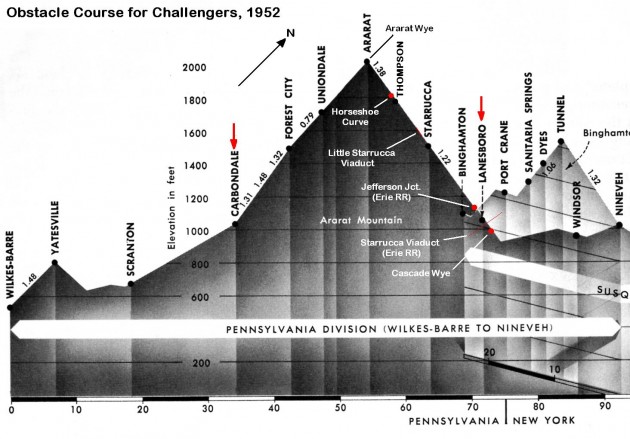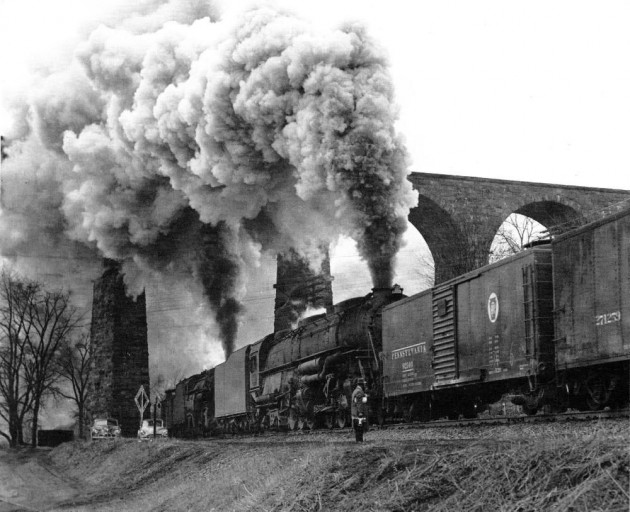Obstacle Course for Challengers, 1952
(Original image coutesy “Trains” magazine, and Syracuse University Press)
This diagram represents the track profile for the D&H Penn Division, running from south to north as viewed from left to right. The Division starts in Wilkes-Barre, PA (PRR Interchange), and ends at Nineveh, NY, where the Penn Division merges with the D&H’s own Susquehanna Division, and heads north to Albany, NY.
I have made some modifications to the profile to highlight my modeling area. The red arrows indicate the start (Carbondale, PA) and the stop (Lanesboro, PA) of the portion of the Penn Division I am representing on my layout. All other Penn Divison trackage (representing both ends of the line) will be in the form of off-scene, hidden staging.
I have also highlighted some other areas of interest on the line to include the the Ararat Wye, “Little Starrucca” Viaduct (not to be confused with Erie’s own Starrucca Viaduct that was located in Lanesboro), Horseshoe (also known as Ash Fill) Curve, Jefferson Junction, Starrucca Viaduct, and Cascade Wye just north of Lanesboro, PA.
Most railroad bridges are named not for the town or region in which they are located, but the valley, creek, stream, river or other body of water they span. The Erie’s Starrucca Viaduct was not located on the Penn Division, but actually spans over it as well as Starrucca Creek (from which the structure takes its name), with the D&H Penn Division tracks running beneath it. The Erie’s own Delaware Division, which was part of their high-speed Jersey City to Chicago main, passed over on the Viaduct. In this shot, we see a D&H pusher pair in the form of a J-Class Challenger and an E-Class Super Consolidation assisting a Symbol and starting the southbound push from Lanesboro, and up the northern slope of Ararat Mtn. (William S. Young photo)
This is an image of “Little Starrucca” viaduct, that is actually located in the town of Starrucca, PA….so much for railroad bridge naming conventions!!! This steel structure is approximately 650′ in length and rises above the valley over 100′. This bridge is a part of the original construction of the Erie Jefferson Division in 1870, and was built by the Erie, not the D&H. In this May 1950 view, we are looking southeast, and we see Symbol WM-5 (Wilkes-Barre-Mechanicville-5) heading north towards Lanesboro, where the train will swing back onto the D&H’s own rails for the trip to Mechanicville in upstate New York, near Albany. (William S. Young photo)


